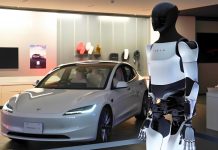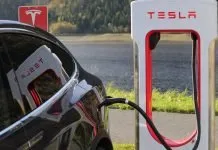We currently are at the peak of range extraction from lithium-ion batteries. Manufacturers are constantly researching ways to increase the range of electric vehicles as well as decreasing their cost. EV adoption has been increasing from the start of the decade. Still, some people are unsure if they want to make the switch from Internal Combustion vehicles. But Daikin claims to have a solution by increasing the range of EVs by as much as 50%!
EVs Range Can Be Extended By 50% Using This Few Hundred Dollars Refrigerant, Daikin

How you may ask?
In places, with extreme temperatures, the cabin and cooling require a major amount of energy. This reduces the overall range of the EV. One way to increase the range is to reduce the amount of energy used by the HVAC system. EV’s will have a new refrigerant made by Daikin. As reported by Nikkei Asia, this refrigerant has a boiling point of about -40 C. This is an incredible 10 to 15 degrees lower than the current refrigerant used by EVs. Refrigerants use the heat produced by compressing the refrigerant to heat and cool the air inside the car. The vehicle can then use this saved power from the compressor which can help in increasing its range.
Claims
When their newly developed refrigerant is used, Daikin has claimes that with an EV of range 200 km (124 miles), on a full charge operating in an urban area of Japan using the air conditioner, an additional 100 km (62 miles) can be obtained. The refrigerant made by the US companies Honeywell and Chemours costs around $270 (Rs. 20,115) per vehicle. This is the most commonly used refrigerant. Daikin will consider the price of this new refrigerant by looking at the market prices. Major EV makers pour millions and billions of dollars into research for increasing the range of their vehicles. If Daikin charges these companies 2x or 3x of the most used EV refrigerant costs, it will be a huge win-win situation for both Daikin and the automakers.
Launch
Daikin has the product ready and the US group SAE International will verify its performance and safety under operating conditions. Daikin is the world’s largest air conditioner manufacturer. This innovation has the potential for the company to be the largest manufacturer in air conditioning in the automobile industry. Daikin will enter the automobile market with its latest refrigerant by 2025. 5.3 times higher than in 2020. Global EV production is estimated to rise to 11.84 million units by 2025.
This innovation coupled with the next generation of battery technologies like solid-state batteries will put EVs at the forefront of people’s consideration. This innovation has the potential to equal the range of internal combustion vehicles. It can also exceed the range offered by internal combustion vehicles. Of course, this new refrigerant will work best where the climate is very extreme. So people living in these areas will benefit the most from this increase in range.



















Sounds good. Could this be used in heat pumps for house heating to improve their effo iency as well? No comment made on any undesirable impact on climate from escape of this new gas, refrigerants dont have a good record in the atmosphere.
The claim is nonsense. The math doesn’t work. I have been driving Leafs for ten years and over 100,000 miles. The range decrease caused by running the air conditioner is between 5 and 10%. A refrigerant that reduced the range decrease to zero would result in an 11% improvement, at most.
This press release has been quoted as fact in many places. The numbers are not based on real world conditions.
Driving in Japan?
This whole article is based on a misunderstanding. The refrigerant might reduce HVAC’s impact to range by 50%, but that is nothing like increasing range by 50%. HVAC use is typically a single digit percentage of energy use.
Please correct or delete this article.
This article is only reporting what the company claims. I agree with your skepticism, but the article has reported no falsehoods.